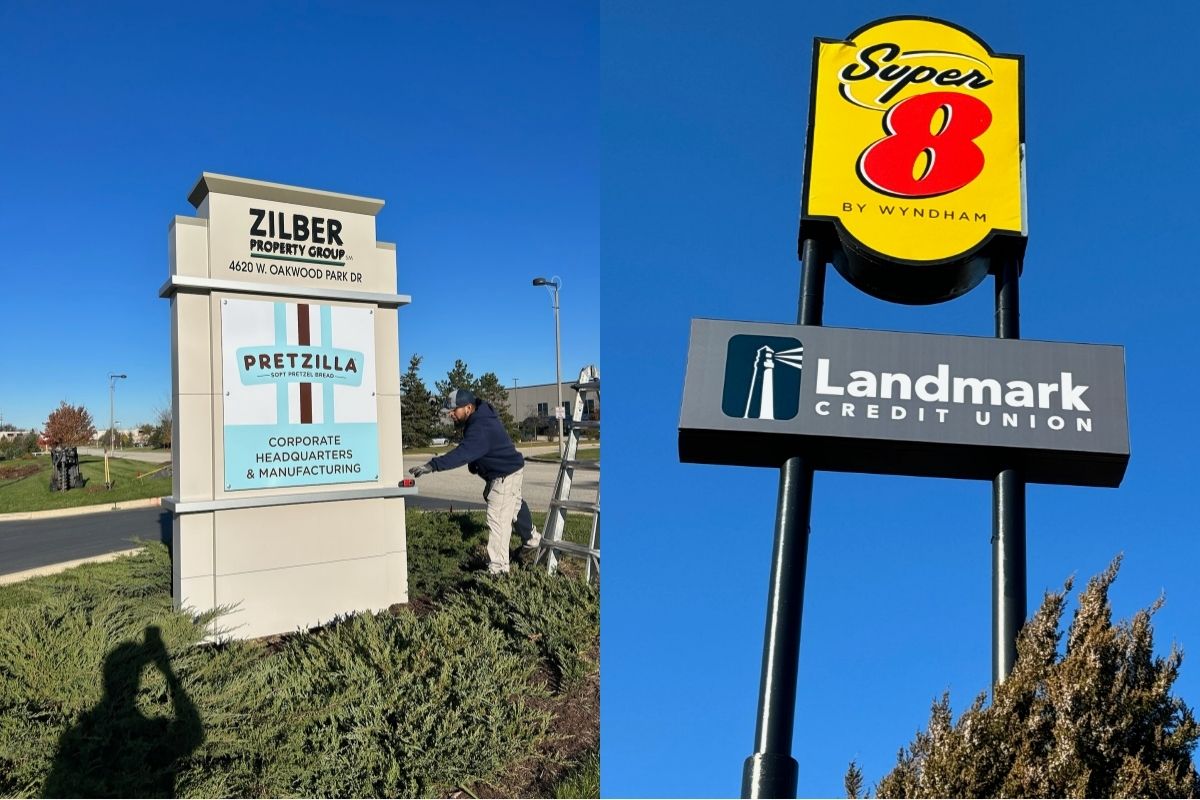Raceway Signs Vs. Wireway Signs: Choosing the Right Mounting Method
Understanding the different mounting options is crucial for mounting signs, especially those that require electrical components. Two common methods are raceway mounting and wireway mounting. Each approach has its own advantages and disadvantages that can impact the installation process, maintenance, aesthetics, and overall functionality of your signage.
This guide will help you understand the key differences between raceway mounted signs and wireway-mounted signs, enabling you to decide on your signage needs.
Here’s the Gist…
- Raceway Mounted Signs: Easier to install and maintain with all electrical components in a single enclosed conduit. Provides better protection and can be painted to match the building, but may be more visible.
- Wireway Mounted Signs: Slimmer and less noticeable, offering a cleaner look. More complex to install and maintain, with electrical components often located inside the building, providing less protection for the wiring.
Let’s dive in.
Raceway Mounted Signs
A raceway is an enclosed conduit that houses electrical components such as wiring, transformers, and power supplies. It is typically made of metal or aluminum and can be painted to match the building facade.
Advantages:
- Aesthetics: The raceway can be painted to blend with the building, providing a cleaner look than exposed wiring.
- Ease of Installation: Since all electrical components are pre-installed in the raceway, the sign installation process is more straightforward and quicker.
- Maintenance: With all electrical components housed within the raceway, maintenance and repairs can be easier to manage.
- Protection: The raceway protects the electrical components from weather and tampering.
Disadvantages:
- Visibility: Depending on the size and color, the raceway can be visible and may affect the overall aesthetics if not properly matched to the building.
Wireway Mounted Signs
A wireway is a smaller, less conspicuous channel that houses only the wiring for the sign. It does not contain other electrical components like transformers or power supplies typically installed inside the building.
Advantages:
- Low Profile: The wireway is slimmer and less noticeable than a raceway, offering a cleaner look when aesthetics are a high priority.
- Flexibility: It can be used when a raceway is too bulky or where building codes or aesthetic requirements dictate a minimal visual impact.
Disadvantages:
- Installation Complexity: The installation process can be more complex and time-consuming because the electrical components are often installed separately inside the building.
- Maintenance: Accessing the wiring for maintenance or repairs can be more challenging since it requires access to the wireway and possibly inside the building where other components are located.
- Less Protection: A wireway provides less protection for the wiring than a raceway, potentially exposing it to weather conditions and tampering.
Let’s Wrap It Up…
- Raceway Mounted Signs are easier to install and maintain because all electrical components are housed in one unit, offering better protection and potentially improved aesthetics when the raceway is well-integrated into the building design.
- Wireway Mounted Signs offer a sleeker appearance with minimal visibility but can be more complex to install and maintain due to the separation of electrical components and wiring.
Choosing between raceway and wireway mounting often depends on the project’s specific needs, including aesthetic preferences, building codes, and installation logistics. That’s why it’s so important to stick with a UL certified signage partner with years of proven success in the industry. We don’t shy away from a challenge at Innovative Signs.








